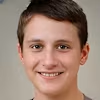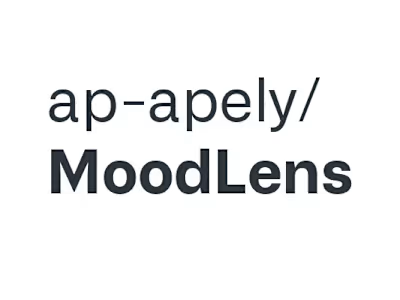ap-apely/PlateVision
PlateVision 🚗✨
A computer vision system designed to detect license plates and recognize text within them.
Table of Contents 📚
About 🔍
PlateVision 🚗✨ is an advanced computer vision system designed to detect license plates and recognize the alphanumeric text within them. The system utilizes state-of-the-art deep learning techniques, specifically the YOLOv11 model for object detection 🧠 and a Convolutional Recurrent Neural Network (CRNN) for optical character recognition (OCR) 📜. PlateVision is built to be efficient, flexible, and highly accurate in real-world applications, such as vehicle surveillance 🚓, toll collection 💸, and automated parking systems 🅿️.
The system is composed of two core components:
License Plate Detector 🚙🔍: The detection module uses YOLOv11, a cutting-edge object detection model, to identify license plates in an image or video frame 🎥. YOLOv11 is a fast and accurate deep learning model capable of detecting multiple objects in real-time ⏱️. It is well-suited for high-speed applications like vehicle monitoring. This model processes images to predict bounding boxes around license plates, enabling the system to focus on relevant areas for text recognition.
License Plate Text Recognition 📝🔠: After detecting the license plate, the system uses a CRNN model to recognize the alphanumeric text within the plate 🅾️🔡. A CRNN combines the power of Convolutional Neural Networks (CNNs) for feature extraction 🔍 and Recurrent Neural Networks (RNNs) for sequence modeling 🔁. This makes it highly effective for text recognition tasks, especially when the text is skewed, noisy, or in non-standard fonts. The CRNN model converts the extracted features from the license plate into readable text.
Use Cases 🌍:
Vehicle Identification 🚙🔑: Automating vehicle registration and identification in smart city applications 🏙️, including toll booths 🚏, automated parking 🅿️, and security systems 🛡️.
Law Enforcement 👮♂️: Assisting in tracking vehicles of interest 🚔 or enforcing traffic laws 🛣️ by capturing license plate data in surveillance footage 🎥.
Fleet Management 🚛: Automatically tracking and recording the location of fleet vehicles for logistics companies 🚚💨.
PlateVision is built for ease of use, ensuring that both researchers 🧑🔬 and developers 👨💻 can quickly integrate license plate detection and text recognition into their own projects. With a strong focus on performance ⚡ and accuracy 🎯, it is an ideal solution for applications where automated license plate reading is essential.
Features 🌟:
High Accuracy 🎯: The combination of YOLOv11 and CRNN ensures reliable and precise detection and recognition of license plates, even in challenging conditions such as varying lighting 🌅, angles ↗️, or occlusions 🛑.
Real-Time Processing ⚡: The system is designed to work efficiently for real-time applications, providing fast and scalable performance 🖥️.
Flexible Input 🎨: Supports both grayscale and color images 🌈 with a variety of resolutions 📸, making it adaptable to various sources like CCTV footage or static images.
Scalability 📈: Easily adaptable for large-scale systems, such as traffic monitoring 🚦 or fleet management 🚚, with the ability to handle batch image processing.
Requirements 🛠️
To run the project, make sure you have the following:
Python 3.8 or higher
PyTorch 1.9 or higher
OpenCV 4.5 or higher
Ultralytics (YOLOv11 model)
Albumentations (image augmentation library)
Installation ⚙️
Follow these steps to set up the project:
Clone the repository:
Install the required libraries:
If you encounter any issues, make sure to update your Python version and dependencies.
Usage 🎬
License Plate Detection and Text Recognition
Run the main script to detect license plates and recognize text in an image:
python main.py /path/to/image.jpg
Config ⚙️
The configuration file allows you to easily adjust the settings for the project. Below is an example of a typical configuration:
basic:
use_cuda: true
yolo_model: ./license_plates_box/weights/license_plates_detection.pt
text_model: ./license_plates_text/weights/license_plates_text.pth
additional:
image_resolution_x: 1920
image_resolution_y: 1080
text_recognition:
defaults:
- override hydra/job_logging: custom
processing:
device: cuda
image_width: 180
image_height: 50
training:
lr: 3e-4
batch_size: 8
num_workers: 4
num_epochs: 10
bools:
DISPLAY_ONLY_WRONG_PREDICTIONS: true
VIEW_INFERENCE_WHILE_TRAINING: true
SAVE_CHECKPOINTS: false
paths:
dataset_dir: ./dataset/train/img
save_model_as: ./logs/2.pth
model:
use_attention: true
use_ctc: true
gray_scale: true
dims: 256
Explanation 📝:
basic: Contains general settings such as whether to use CUDA for GPU acceleration ⚡ and paths to the YOLO 🚗 and CRNN 🧠 models.
additional: Defines the image resolution for input images 📸.
text_recognition: Contains configuration related to text recognition 📝, including processing settings (e.g., device, image size), training parameters (e.g., learning rate, batch size), and paths for dataset 📂 and model saving 💾.
model: Contains model-specific settings like whether to use attention mechanisms 👀 or grayscale input 🖤.
You can adjust these settings based on your system's specifications 🖥️ and the specific needs of your project 🛠️.
Training 🏋️♂️
Text Recognition Model 📜
How to Train 📝:
Prepare the Dataset: Create a directory called "dataset" and place your images in it (preferably PNG, but other formats are acceptable as long as you modify the code to handle them). The name of each image must correspond to the text written in the image.
Directory Structure: Your file tree should look like this: PlateVision └─license_plates_text └─Dataset ***.png
Image Names: The name of each image should represent the text it contains. For example,
car.png should have the word "car" written on it, cat.png should have "cat", and so on.Data Preparation: Ensure that all your images are of the same length. Padding is done automatically when using Attention + CrossEntropy. However, if you're using CTC Loss, padding is not automatically applied, so make sure to normalize your target lengths. You can add a special character to represent empty space, but avoid using the same character as the blank token in CTC (they are different). For example, 'car_.png', 'tree.png'
YOLO Visual Model 🚗
How to Train YOLO Model 📸:
Prepare Your Dataset:
Training:
Run Training: Here’s an example of how you can train the YOLO model using the
train.py script:Model Export: After training, you can export the model to the desired format (e.g., ONNX or TorchScript) for deployment. The exported model can then be used for inference in your vehicle detection system.
Additional information about the future of this project...
(P.S I may upgrade this repo in the future by adding my own pre-trained weights and creating a real-time web-based interface. Star the project to support me!)
Like this project
Posted Nov 22, 2024
PlateVision 🚗✨ is an advanced computer vision system designed to detect license plates and recognize the alphanumeric text within them. The system utilizes sta
Likes
0
Views
2
Tags



